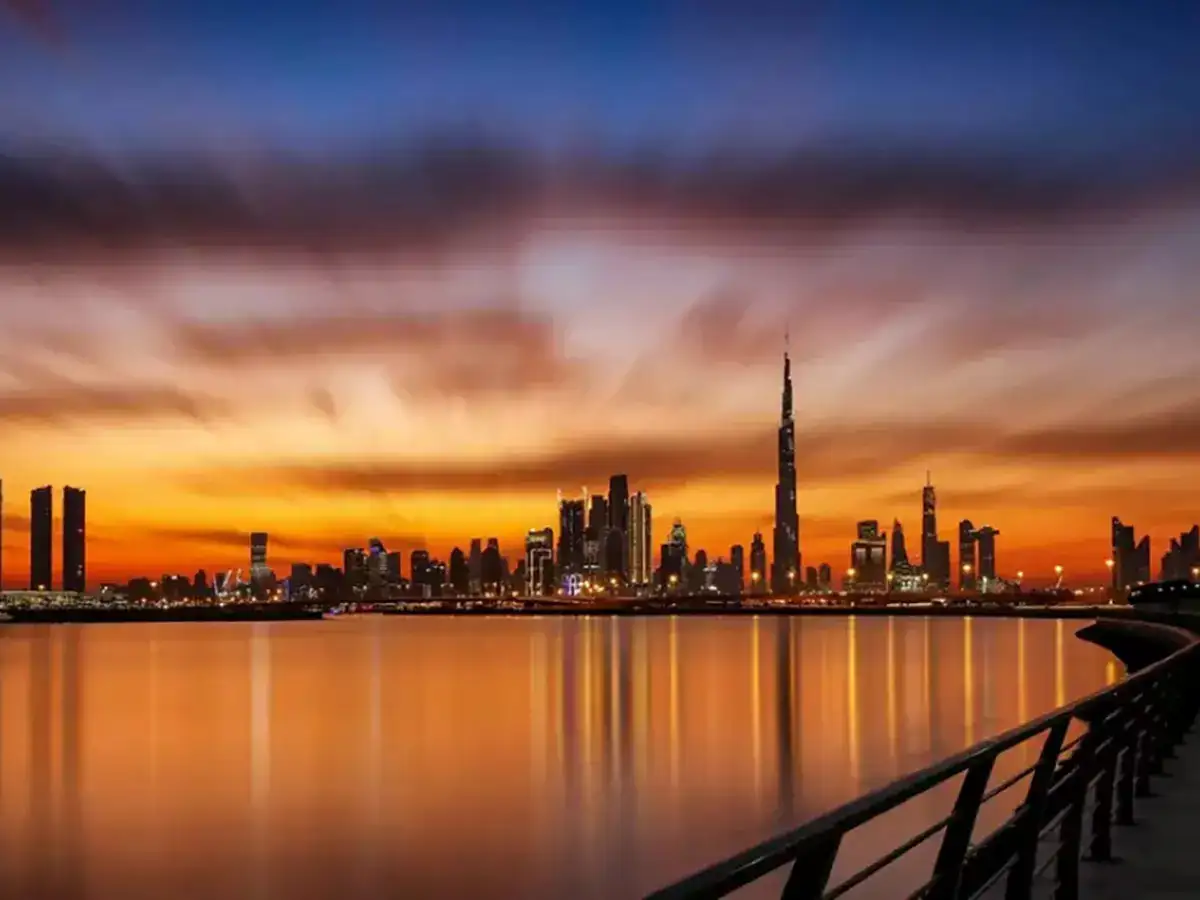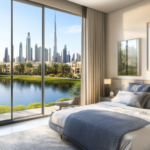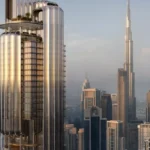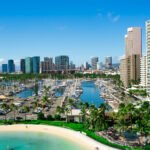Now Reading: Dubai Real Estate: 15 Impacts of New Sewerage Fee Changes in 2025
-
01
Dubai Real Estate: 15 Impacts of New Sewerage Fee Changes in 2025
Dubai Real Estate: 15 Impacts of New Sewerage Fee Changes in 2025
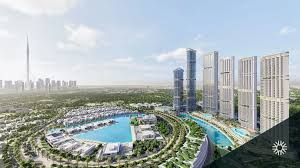
Table of Contents
Dubai’s real estate market, renowned for 6-8% rental yields and tax-free capital gains, faces a pivotal shift in 2025 with a forecasted 15% price decline per Fitch Ratings. Amidst AED 761 billion in 2024 transactions, Dubai Municipality’s revised sewerage fee structure, effective January 2025, introduces a phased increase—the first in a decade—starting at 1.5 fils/gallon, rising to 2 fils/gallon in 2026, and reaching 2.8 fils/gallon by 2027.
Announced on November 5, 2024, this aligns with the Dubai 2040 Urban Master Plan to support a population projected to hit 5.8 million by 2040. These fees, reflected in DEWA bills, impact homeowners, tenants, and businesses in Dubai Municipality-managed areas. This guide, crafted in clear, SEO-friendly language with an engaging tone, tracks 15 significant impacts of the new sewerage fee changes on Dubai’s real estate market in 2025, tailored for U.S. investors, with data-driven insights, legal considerations, and risk analysis.
15 Impacts of New Sewerage Fee Changes in 2025

1. Increased Operating Costs for Property Owners
The sewerage fee hike from 1 fil/gallon to 1.5 fils/gallon (a 50% increase) raises annual costs for property owners, particularly for villas in areas like JVC, where water usage averages 1,000 gallons monthly.
- Impact: Owners face an additional AED 60-120 annually per property, reducing net yields by 0.1-0.2% for a AED 600,000 JVC unit yielding 7%.
- Investor Action: Budget AED 100-200 extra annually. Offset costs by raising rents by 1-2% in high-demand areas like Dubai Marina.
- Example: A JVC villa owner’s sewerage bill rises from AED 120 to AED 180 yearly, cutting USD 16 from USD 11,431 net rental income.
2. Higher Tenant Expenses in Rental Properties
Tenants in Dubai Municipality-managed areas, such as Business Bay, will see sewerage fees integrated into DEWA bills, increasing monthly expenses by AED 5-10 for apartments and AED 10-20 for villas.
- Impact: Higher costs may deter tenants in oversupplied areas, pushing vacancy rates up by 2-3% in JVC, per CBRE.
- Investor Action: Offer incentives like one-month free rent for 12-month leases to maintain 80% occupancy in JVC properties yielding 6-8%.
- Example: A Business Bay tenant’s DEWA bill rises from AED 500 to AED 510 monthly, prompting negotiations for rent reductions.
3. Pressure on Rental Yields in Mid-Tier Markets
The fee increase, though modest (1.5 fils/gallon), compounds with rising service charges (AED 15-25/sq. ft.), squeezing yields in mid-tier areas like Dubai South (6-7% yields), where tenants resist rent hikes.
- Impact: Yields may drop by 0.2-0.4% as owners absorb costs to remain competitive, per ValuStrat.
- Investor Action: Target prime areas like Dubai Marina (8-10% yields) to offset fee impacts with higher rental demand.
- Example: A Dubai South apartment’s yield falls from 6.5% to 6.3% (AED 800,000 unit, AED 52,000 rent), losing USD 544 annually.
4. Boosted Demand for Water-Efficient Properties

The fee hike promotes water conservation, increasing demand for properties with eco-friendly features like low-flow fixtures and smart meters, especially in Dubai Sustainable City.
- Impact: Eco-friendly properties command 5-10% rental premiums, per Knight Frank, enhancing 7-8% yields.
- Investor Action: Retrofit JVC units (from AED 600,000) with water-saving devices for AED 5,000, recovering costs in 2-3 years via higher rents.
- Example: A retrofitted JVC apartment rents for AED 65,000 vs. AED 60,000, adding USD 1,361 to annual income.
5. Support for Infrastructure Development
Increased sewerage fees fund the AED 80 billion sewerage system approved in 2024, ensuring infrastructure keeps pace with 90,000 new homes in 2025, per Gulf News.
- Impact: Enhanced infrastructure in Dubai South and Azizi Venice supports 10-15% price appreciation by 2028, per Emaar Properties.
- Investor Action: Invest in off-plan units in Dubai South (from AED 800,000) to capitalize on infrastructure-driven growth.
- Example: A AED 1 million Dubai South unit appreciates to AED 1.15 million by 2028, yielding USD 40,838 profit.
6. Impact on Commercial Property Costs
Commercial properties, like offices in Business Bay, face higher sewerage fees proportional to higher water usage (1,500-2,000 gallons monthly), increasing operating costs by AED 90-180 annually.
- Impact: Commercial landlords may pass costs to tenants, raising rents by 1-2%, potentially slowing leasing in oversupplied areas, per Cushman & Wakefield.
- Investor Action: Offer flexible lease terms (e.g., 6-month contracts) to maintain 85% occupancy in Business Bay.
- Example: A Business Bay office landlord raises rent from AED 100,000 to AED 102,000, offsetting AED 180 sewerage costs.
7. Alignment with Dubai 2040 Urban Master Plan
The fee increase supports the Dubai 2040 Urban Master Plan, addressing a population surge from 3.914 million in 2025 to 5.8 million by 2040, per Dubai Statistics Centre.
- Impact: Sustained infrastructure investment stabilizes property values, mitigating the 15% price decline in prime areas like Palm Jumeirah.
- Investor Action: Focus on luxury properties in Palm Jumeirah (from AED 2 million) for 7-9% price growth in 2025, per DAMAC Properties.
- Example: A AED 2.5 million Palm Jumeirah villa appreciates to AED 2.675 million, gaining USD 47,657.
8. Encouragement of Sustainable Practices
The fee hike aims to reduce water wastage by 10%, per Dubai Municipality, pushing developers to adopt sustainable designs in projects like Dubai Hills Estate.
- Impact: Green-certified properties (LEED, Estidama) see 5% higher demand, boosting 6-8% yields, per Betterhomes.
- Investor Action: Invest in LEED-certified off-plan units in Dubai Hills (from AED 1.2 million) for long-term value.
- Example: A Dubai Hills unit rents for AED 96,000 vs. AED 90,000 for non-certified, adding USD 1,633 annually.
9. Minimal Impact on Luxury Market
Luxury properties in Downtown Dubai and Palm Jumeirah, with 948 sales above AED 15 million in 2024, are less affected due to high-net-worth tenants absorbing fee increases.
- Impact: Yields remain stable at 6-7%, with 7-9% price growth in 2025, per DAMAC Properties.
- Investor Action: Target luxury villas in Dubai Hills Estate (from AED 5 million) for resilient returns.
- Example: A AED 140 million Dubai Hills villa maintains AED 980,000 rental income, unaffected by AED 360 sewerage costs.
10. Increased Costs for Short-Term Rentals
Airbnb properties in commercial zones (e.g., Business Bay) face 5% VAT plus higher sewerage fees, adding AED 60-120 annually for hosts with 1,000 gallons monthly usage.
- Impact: Net yields for Airbnb rentals drop by 0.1-0.2%, per ValuStrat, but 8-10% yields remain attractive.
- Investor Action: Optimize pricing on Bayut to offset costs, targeting 90% occupancy in Dubai Marina.
- Example: A Business Bay Airbnb unit’s costs rise by AED 120, offset by a AED 2,000 annual price increase, maintaining USD 21,770 income.
11. Potential for Tenant Pushback
Tenants in mid-tier areas like Al Furjan may resist absorbing sewerage fee increases, pressuring landlords to freeze rents, reducing yields by 0.3-0.5%, per Knight Frank.
- Impact: Vacancy rates may rise by 3-5% in oversupplied areas with 72,365 units delivered in 2025.
- Investor Action: Offer utilities-inclusive leases in Al Furjan to attract tenants, maintaining 6-7% yields.
- Example: An Al Furjan apartment landlord absorbs AED 90 sewerage costs, keeping rent at AED 50,000 to secure tenants.
12. Support for Population Growth
Fees fund infrastructure for a 5% annual population increase (51,295 in Q1 2025), ensuring services for 250,000 new units by 2026, per Fitch Ratings.
- Impact: Sustained demand in Dubai South supports 6-7% yields despite price corrections.
- Investor Action: Invest in mid-income units in Dubai South (from AED 800,000) for stable rental demand.
- Example: A AED 900,000 Dubai South unit yields AED 63,000 annually, driven by population-driven demand.
13. Impact on Off-Plan Investment Returns
Off-plan projects in JVC and Azizi Venice, with 16,852 units due in 2025-2027, face higher holding costs due to sewerage fees during construction, per Morgan’s International Realty.
- Impact: ROI may decrease by 0.2-0.3% for investors holding units until completion, per Emaar Properties.
- Investor Action: Opt for pre-sold off-plan units with 50% payment plans to minimize holding costs.
- Example: A AED 1 million JVC off-plan unit’s costs rise by AED 90 annually, offset by AED 150,000 appreciation by 2027.
14. Enhanced Appeal of Free Zone Properties
Properties in free zones like DMCC, not subject to Dubai Municipality sewerage fees, become more cost-competitive, offering 0% corporate tax for QFZPs.
- Impact: Demand for DMCC properties rises by 5-7%, supporting 6-8% yields, per PwC.
- Investor Action: Invest in DMCC apartments (from AED 1 million) to avoid sewerage fees and secure tax benefits.
- Example: A AED 1.2 million DMCC unit saves AED 120 in sewerage fees, boosting USD 19,609 rental income.
15. Long-Term Market Resilience
The fee increase, remaining below global averages (e.g., 4-5 fils/gallon in comparable cities), supports Dubai’s economic resilience, with 18.7 million visitors in 2024 driving demand, per Dubai Tourism.
- Impact: Long-term investors see 10-15% appreciation by 2028 in prime areas, per DAMAC Properties, despite short-term costs.
- Investor Action: Hold investments in Dubai Marina for 3-5 years, leveraging Golden Visa eligibility for AED 2 million properties.
- Example: A AED 2 million Dubai Marina unit appreciates to AED 2.3 million by 2028, yielding USD 81,677 profit.
Legal Considerations for U.S. Expats
- UAE Tax Framework:
- VAT: 5% on commercial transactions (e.g., leases, services), recoverable for VAT-registered businesses. Residential rentals are exempt.
- Corporate Tax: 9% on taxable income above AED 375,000, with 0% for QFZPs or Small Business Relief (revenue below AED 3 million). Residential rental income is exempt.
- Compliance: Register for VAT if taxable supplies exceed AED 375,000 by March 31, 2025. File corporate tax returns by September 30, 2025, for 2024. Penalties: AED 10,000 for late registration, AED 50,000 for missing records.
- U.S. Tax Framework:
- Reporting: Declare worldwide income under FATCA via Forms 8858, 1116, and Schedule E. Income taxed at 10-37%, capital gains at 0-20%.
- Foreign Tax Credit (FTC): Offset U.S. tax with UAE corporate tax paid (not VAT or sewerage fees).
- FEIE: Exclude USD 130,000 of earned income if resident in UAE for 330 days.
- Freehold Ownership: U.S. investors can own properties in freehold zones (e.g., Dubai Marina, JVC), registered with DLD.
- Golden Visa: Properties worth AED 2 million qualify for a 10-year visa.
- Transaction Fees: 4% DLD fee (split with seller), 2% agency fee, AED 540-4,200 registration fees.
Risks and Mitigation
- Oversupply: 210,000–250,000 units by 2026 may deepen price declines. Invest in prime areas like Dubai Marina for 8-10% yields.
- Tenant Resistance: Pushback in mid-tier areas risks vacancies. Offer flexible leases or utilities-inclusive contracts in Al Furjan.
- Compliance Costs: VAT and corporate tax errors incur AED 5,000-50,000 fines. Use advisors like
- U.S. Tax Burden: IRS reporting reduces returns. Claim deductions on Schedule E, consulting U.S. tax professionals.
- Economic Volatility: U.S. interest rates (6-7% in 2025) may limit investment. Dubai’s tourism (18.7 million visitors in 2024) sustains demand.
Step-by-Step Guide for U.S. Investors
- Assess Fee Impact: Calculate sewerage costs (AED 60-180/year) for properties in JVC or Business Bay using DEWA’s usage data.
- Adjust Budgets: Increase rental budgets by 1-2% or absorb costs in mid-tier areas to maintain 6-8% yields.
- Invest in Eco-Friendly Units: Retrofit properties with water-saving fixtures for AED 5,000 to secure 5-10% rental premiums.
- Explore Free Zones: Purchase DMCC properties (from AED 1 million) to avoid sewerage fees and leverage 0% corporate tax.
- Ensure Tax Compliance: Register for VAT by March 31, 2025, if commercial supplies exceed AED 375,000. File U.S. taxes by April 15, 2025, with FTC.
- Monitor Infrastructure: Target Dubai South off-plan units (from AED 800,000) for 10-15% appreciation by 2028, driven by sewerage investments.
- Track Returns: Aim for 6-10% yields and 10-15% gains by 2028, reinvesting savings into prime or sustainable properties.
Conclusion
The 2025 sewerage fee increase, starting at 1.5 fils/gallon, impacts Dubai’s real estate market by raising costs for owners and tenants, pressuring yields in mid-tier areas like JVC, and boosting demand for eco-friendly properties. Supporting the AED 80 billion sewerage system and Dubai 2040 Urban Master Plan, the fees enhance infrastructure for a 5.8 million population by 2040, ensuring long-term resilience with 10-15% appreciation by 2028. U.S. investors can mitigate risks by targeting prime areas like Dubai Marina, retrofitting properties, and leveraging free zone benefits, maintaining 6-10% yields despite a 15% price correction. watch more
read more: 5 Strategic Tips for VAT Compliance in 2025



